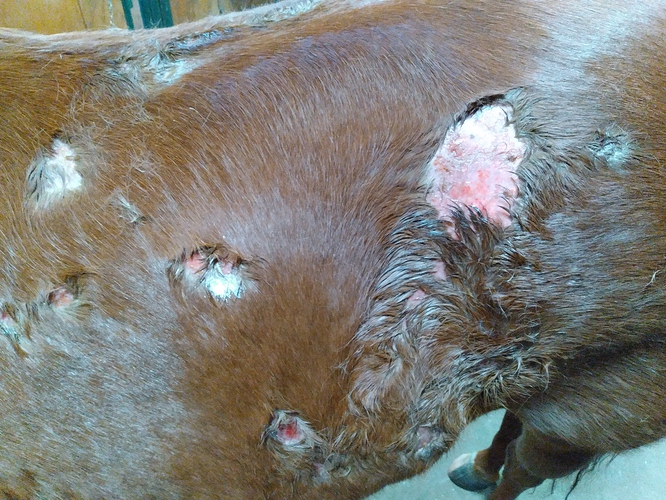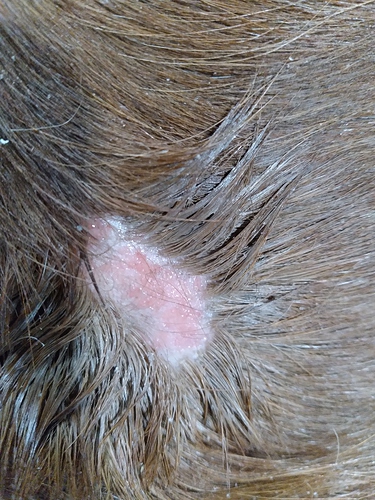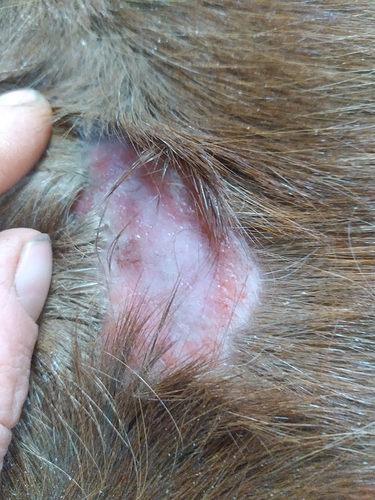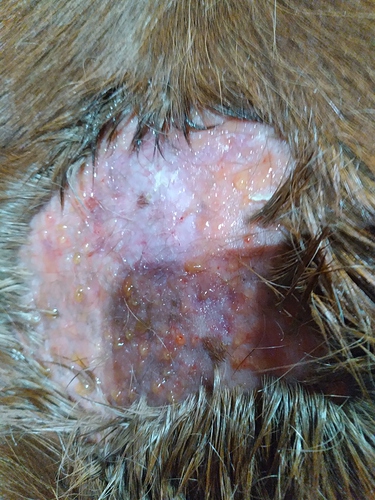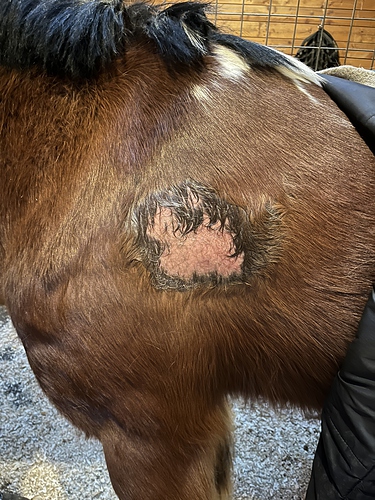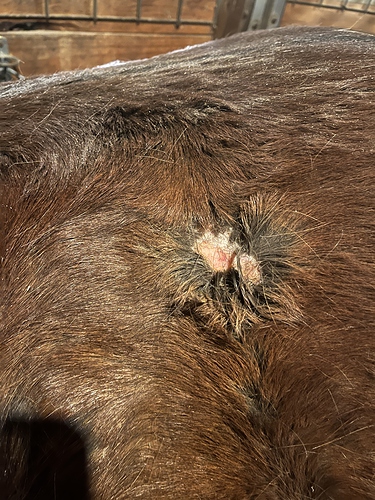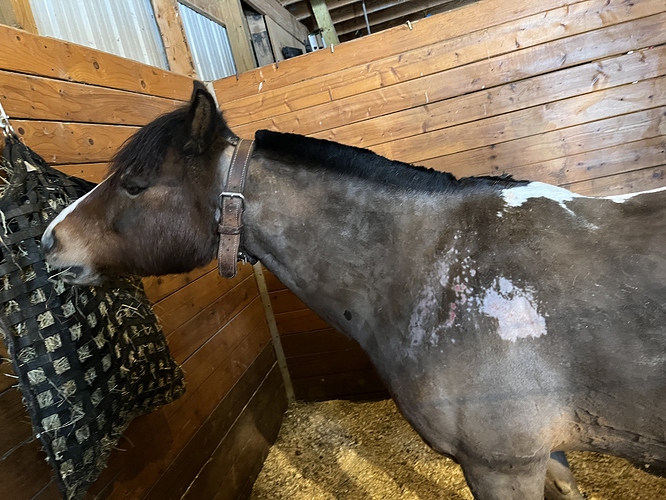Background: Coming 6 year old mare, bought Nov 2021 with her (half) sister. Came from a quiet , closed herd. Very little handling. Both had no vaccinations, and then turned out to have ticks, so they have been in isolation (together), although it is a “soft” isolation in that I don’t change my clothes after handling them, and they are in the barn to be worked, just no direct contact with other horses. Ticks last spotted in January. Each mare had over 15 ticks each by end.
Brought Miss Annie in a week ago to ride, and she had a little oozy patch on her left flank. It was itchy and hair came off easily. I put an aloe cream on it. Two days later (monday), brought her in and it was bigger, and more spots had erupted. I already had the vet booked for Thursday to do teeth - he suggested it was fungal, so while she was still drugged I bathed her in Hibitaine and put her in a brand NEW blanket. Saturday it was still getting bigger and more and more spots of the same thing appeared. Covered them in antifunal cream. Today (Sunday) I let her roam blanketless in the arena while I rode her sister, and she itched away even more spots (which helped me find all the spots at least) and so I covered them all in more anti-fungal.
First picture is today. She has it on both sides, but worse on the left. Nothing on her neck, legs, chest, or head. Some spots on her belly, but mostly where the blanket sits. She has only worn new blankets. The spots seem to correspond with where the ticks were.
I would love to leave her naked for a bit, but it is too cold/windy. Ideas? Help? I plan to send the vet an updated picture.

